Abstract
Of 391 patients with sickle cell disease known to the health care facilities of the University of South Alabama, 194 patients used these facilities in 1989. In that year, 33.5 percent of patients seen at the University of South Alabama did not attend the Comprehensive Health Care Clinics developed for sickle cell patients. There were major differences in the patterns of use and in health care costs among sickle cell patients who attended the Comprehensive Health Care Clinics and those who did not. Patients not using these clinics, although they accounted for only 33.5 percent of the total patients, constituted 71.4 percent of visits to the emergency rooms and 42.3 percent of inpatient admissions. Patients enrolled in the Comprehensive Health Care Clinics used emergency rooms and inpatient units less frequently (P < 0.0001 and P = 0.0006, respectively) and were responsible for significantly smaller health care costs in each category (P < 0.0300). Evaluation of factors responsible for differences in the use patterns and patient education to improve use of comprehensive health care services should be considered.
Full text
PDF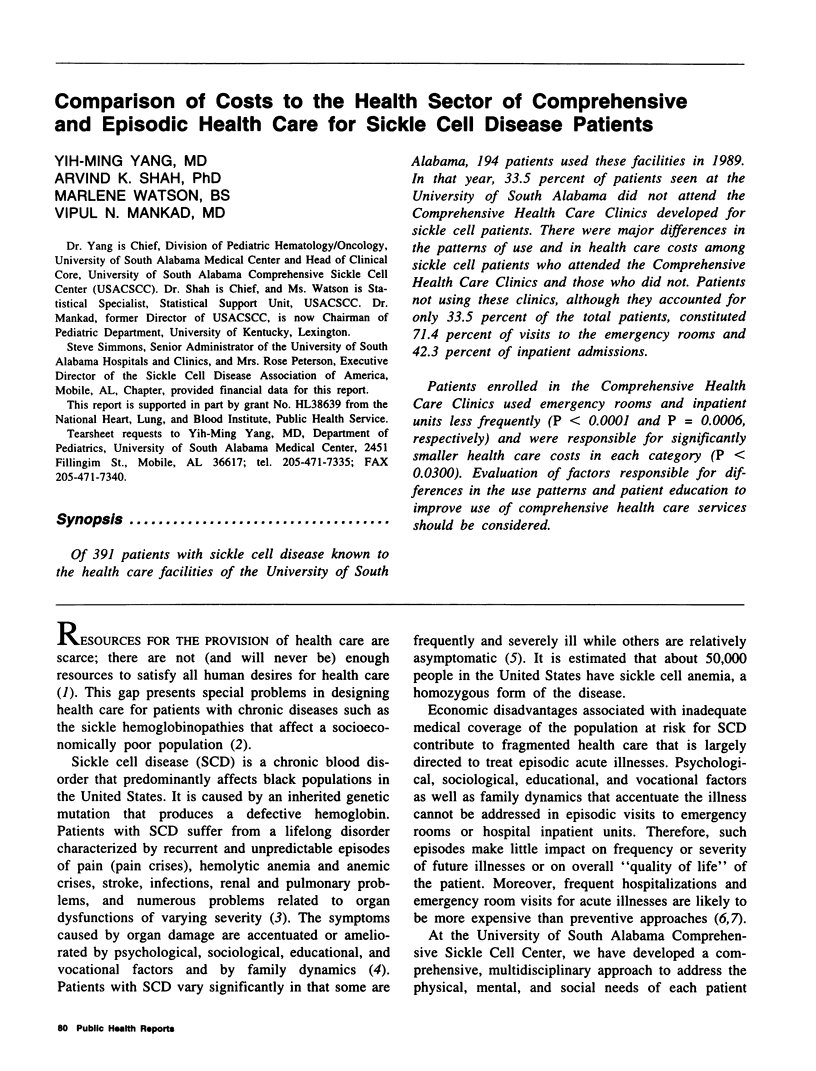
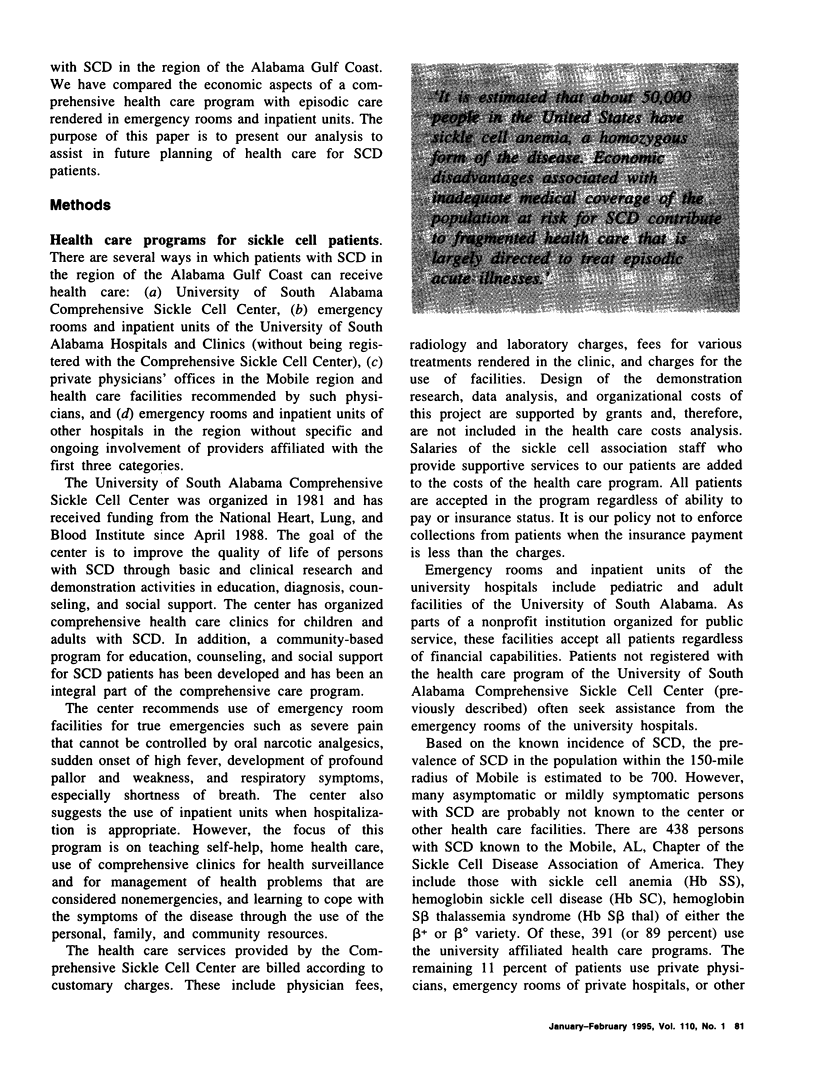
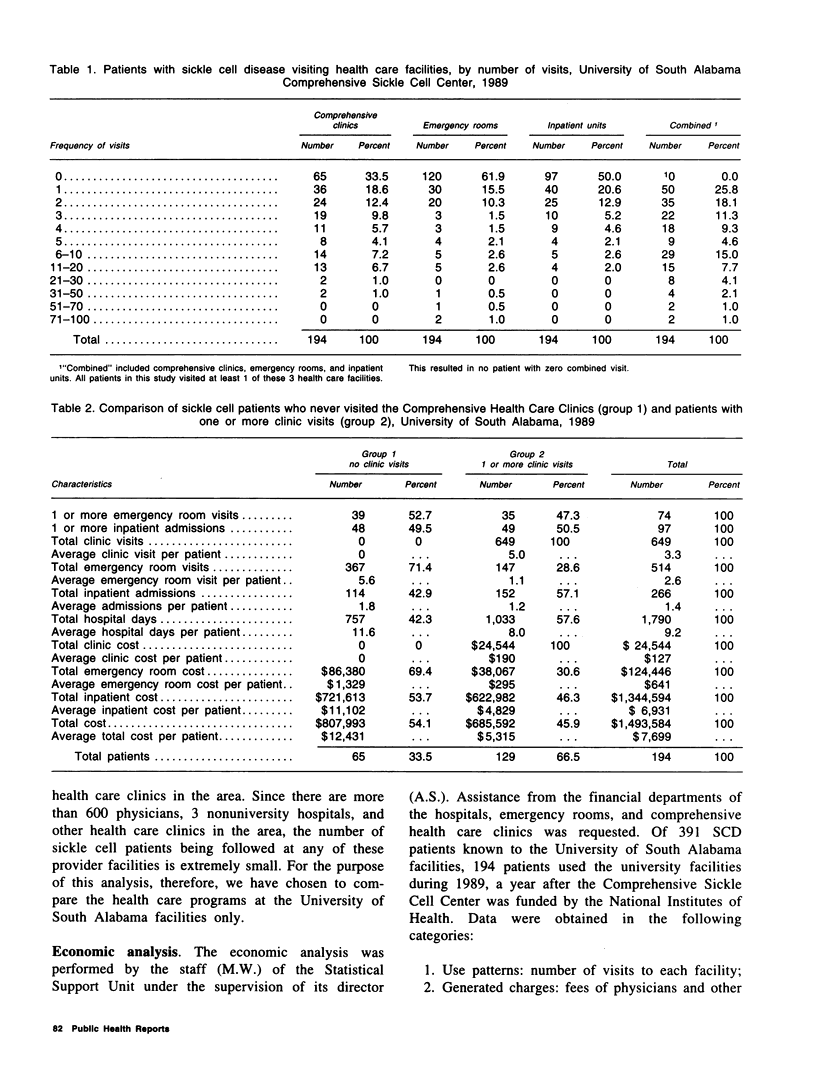
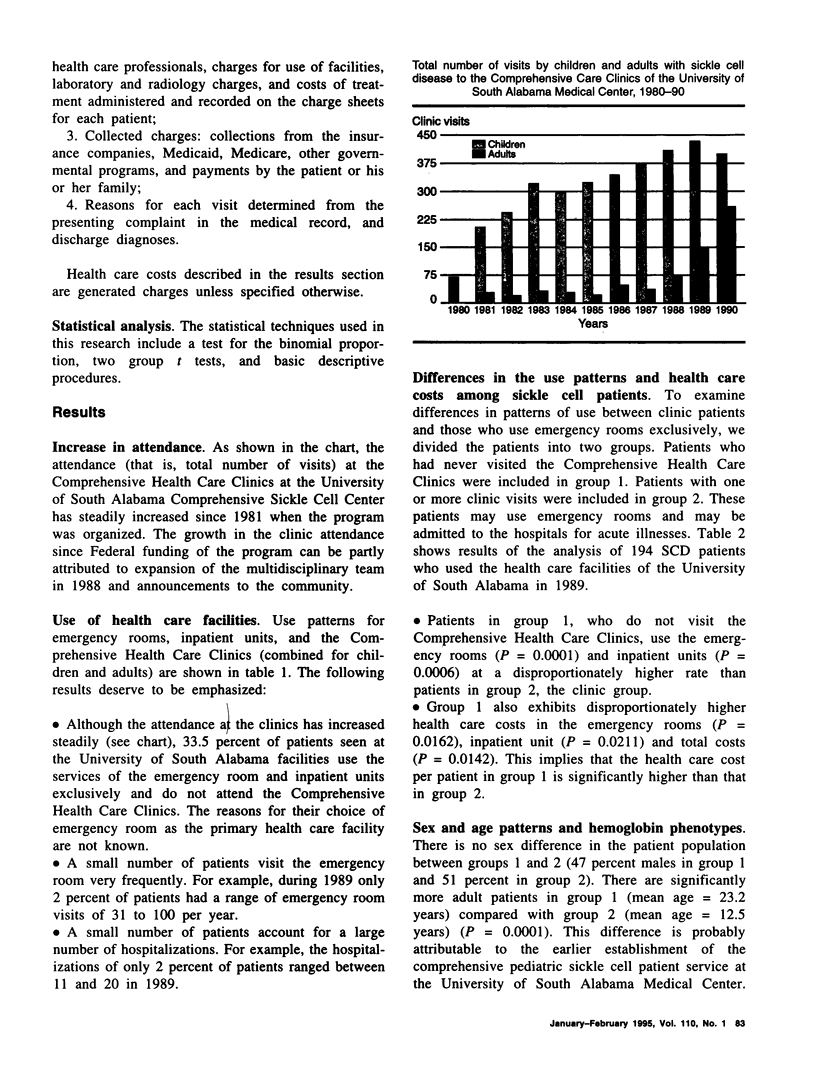
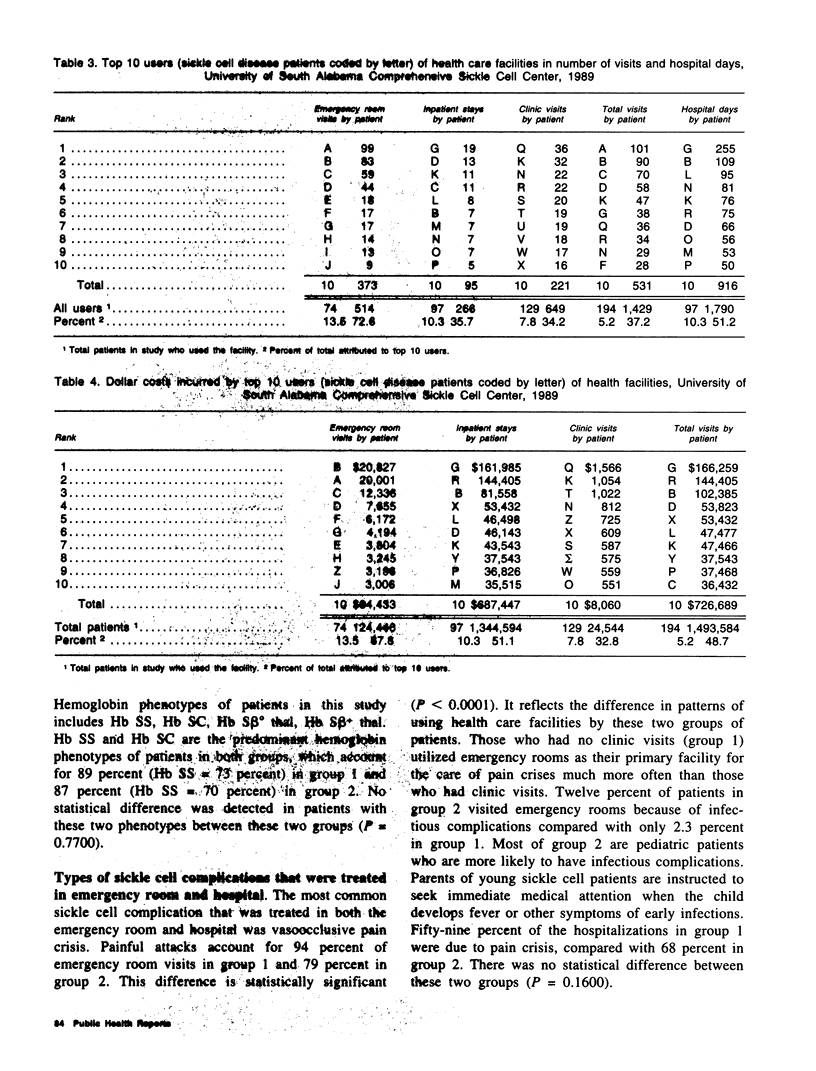
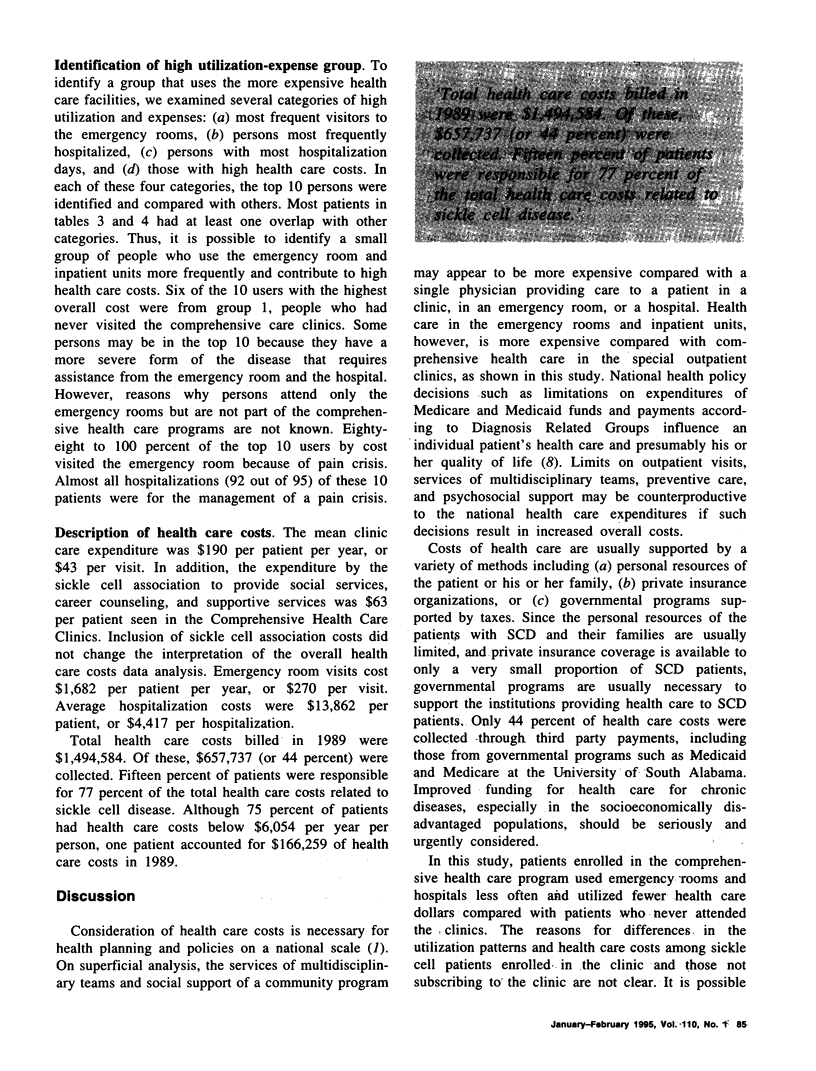
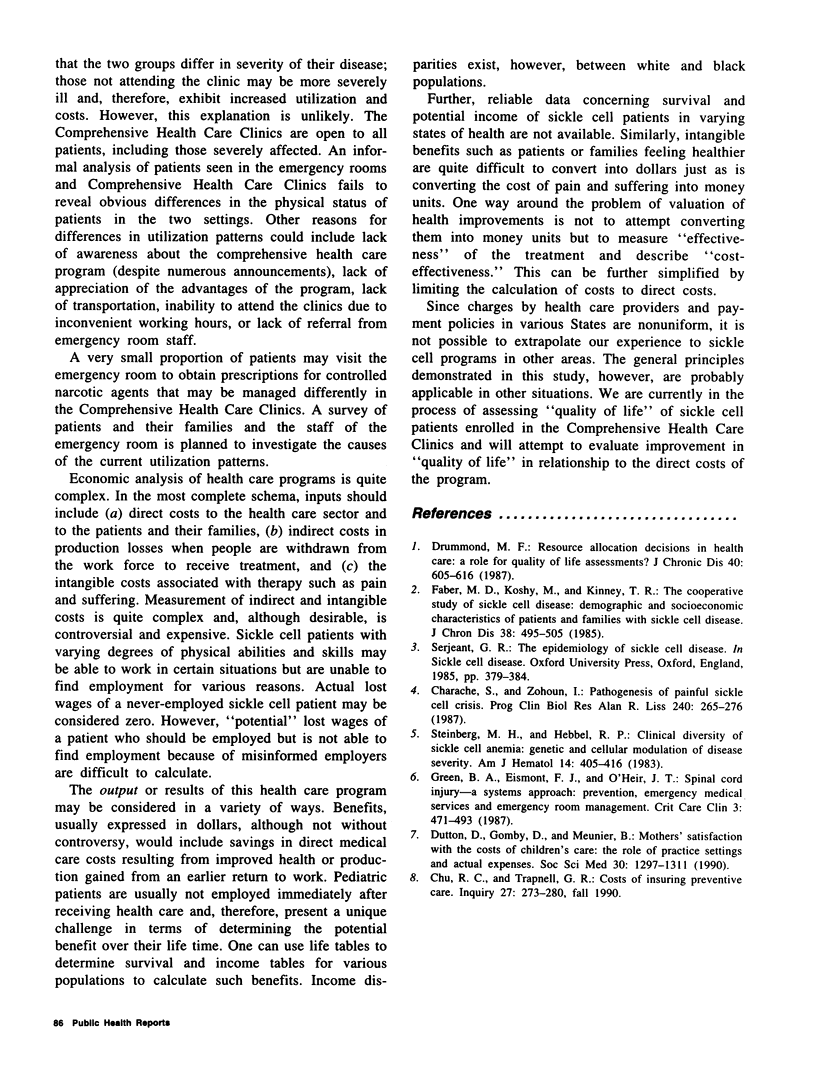
Selected References
These references are in PubMed. This may not be the complete list of references from this article.
- Charache S., Zohoun I. Pathogenesis of painful sickle cell crises. Prog Clin Biol Res. 1987;240:265–275. [PubMed] [Google Scholar]
- Chu R. C., Trapnell G. R. Costs of insuring preventive care. Inquiry. 1990 Fall;27(3):273–280. [PubMed] [Google Scholar]
- Drummond M. F. Resource allocation decisions in health care: a role for quality of life assessments? J Chronic Dis. 1987;40(6):605–619. doi: 10.1016/0021-9681(87)90021-x. [DOI] [PubMed] [Google Scholar]
- Dutton D., Gomby D., Meunier B. Mothers' satisfaction with the cost of children's care: the role of practice settings and actual expenses. Soc Sci Med. 1990;30(12):1297–1311. doi: 10.1016/0277-9536(90)90310-o. [DOI] [PubMed] [Google Scholar]
- Farber M. D., Koshy M., Kinney T. R. Cooperative Study of Sickle Cell Disease: Demographic and socioeconomic characteristics of patients and families with sickle cell disease. J Chronic Dis. 1985;38(6):495–505. doi: 10.1016/0021-9681(85)90033-5. [DOI] [PubMed] [Google Scholar]
- Green B. A., Eismont F. J., O'Heir J. T. Spinal cord injury--a systems approach: prevention, emergency medical services, and emergency room management. Crit Care Clin. 1987 Jul;3(3):471–493. [PubMed] [Google Scholar]
- Steinberg M. H., Hebbel R. P. Clinical diversity of sickle cell anemia: genetic and cellular modulation of disease severity. Am J Hematol. 1983 Jun;14(4):405–416. doi: 10.1002/ajh.2830140412. [DOI] [PubMed] [Google Scholar]


